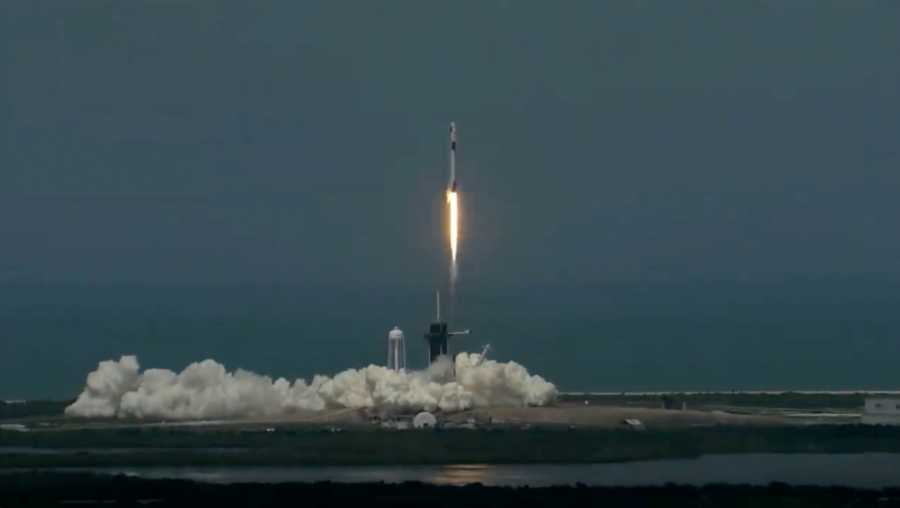SpaceX’s Falcon 9 Launch: A Summary of Events
June 2, 2020
It was a historic weekend for human spaceflight.
On Saturday, May 30, SpaceX launched NASA astronauts Robert Behnken and Douglas Hurley en route to the International Space Station (ISS) in the first manned launch from U.S. soil since the Space Shuttle program was discontinued in 2011.
The goal of the Demo-2 mission is to demonstrate a successful round trip to the ISS and back, where Behnken and Hurley are slated to remain for upwards of 110 days. The flight was originally scheduled for May 27, but was postponed due to weather concerns.
Falcon 9, the launch vehicle that carried the astronauts up top in the Crew Dragon capsule, took off from Florida’s Kennedy Space Center at 3:22 p.m. EDT. After detaching from Crew Dragon, Falcon 9 returned to Earth and made a successful landing on the SpaceX drone ship Of Course I Still Love You.
The launch marked the first time that a privately-owned company has sent humans into space, and, as Hurley speculated during a mid-flight video, perhaps the first time a space vehicle has flown with touch screen controls. In the same video, Behnken noted that he and Hurley were “surprised” at how well they slept aboard the vehicle during their designated 8-hour sleep period.
In a tradition that has been carried out since the days of NASA’s Project Mercury, Hurley ceremoniously named the capsule “Endeavor.”
The name, Hurley explained, was selected as a tribute to “the incredible endeavor that NASA, SpaceX and the United States has been on since the end of the Shuttle program back in 2011,” as well as how he and Behnken had their debut spaceflights aboard Space Shuttle Endeavor.
Crew Dragon docked with the ISS on May 31 at 10:16 a.m. EDT and were welcomed by its current occupants, Expedition 63, upon their entrance at 1:02 p.m. EDT. While aboard the ISS, Behnken and Hurley will conduct tests on the spacecraft.
As explained in a Verge Science video, the U.S. previously had to pay Russia millions of dollars to send Americans to the ISS via Soyuz rockets. Now, control has been restored to U.S. soil. While NASA still pays a fee to SpaceX, the switch supports American business while eliminating reliance on a separate nation and its potential variables.
Crew Dragon’s successful launch and docking hails what is being widely referred to as a ‘new era of spaceflight.’
To learn more about Crew Dragon and the Demo-2 mission, visit spacex.com.







